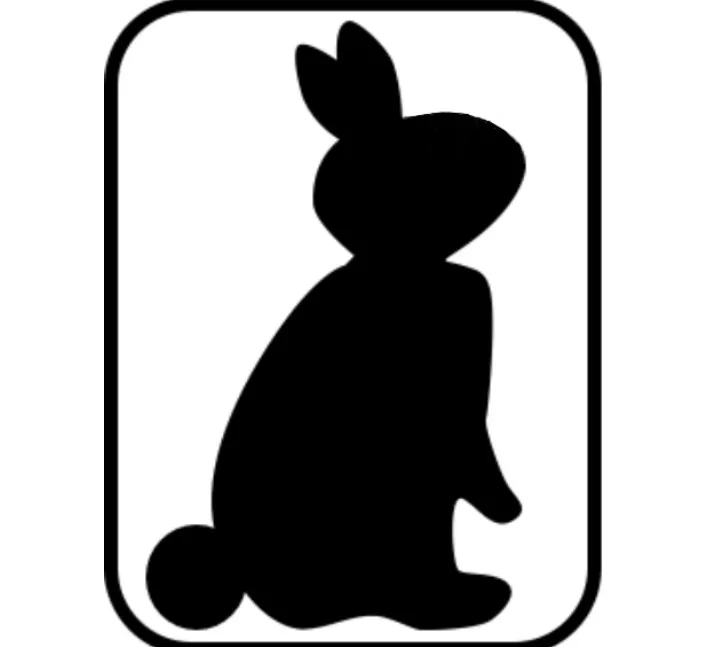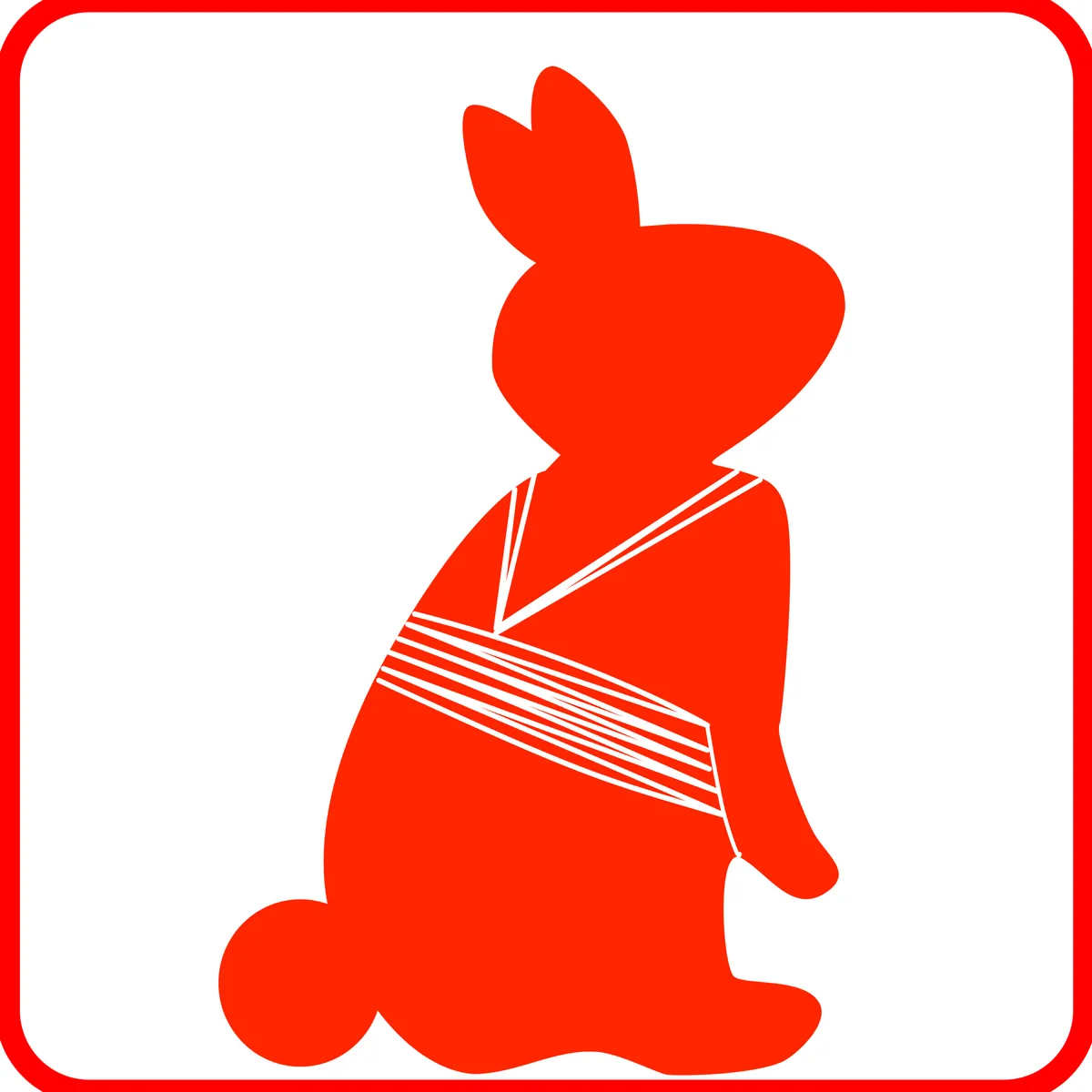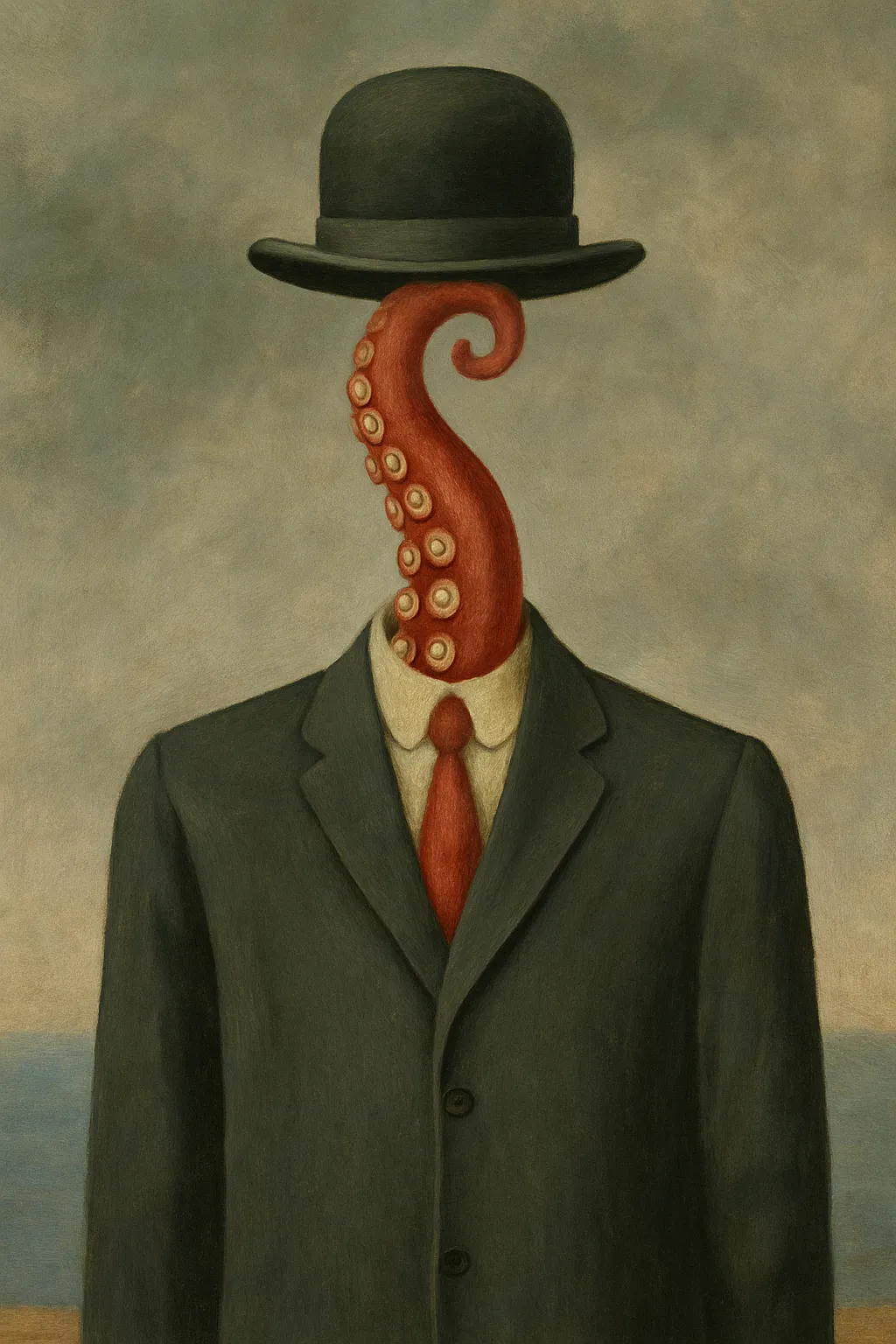Son of — Blaugust the Nineteenth(!)
The Son of Man has haunted me longer than I’d care to admit. A faceless sentinel in bowler hat and overcoat, a man obscured by the fruit of Eden, daring us to pretend we know what lies beneath. I tell myself I like other art, but nothing squats so heavily in the brainpan as this ridiculous, ominous figure.
Why? Perhaps because, like some drowned god’s reflection, I’ve seen it mirrored in my own marks. My crude logos, the bunnies I’ve fashioned over the years—plain, harnessed, bespectacled—each a personal glyph stamped upon the void. These are not mere doodles. They are talismans. They are how I tell the abyss that I was here.
Bunny Logos I Have Loved



And that’s the trick of it, isn’t it? Art is branding, branding is art. The Son of Man isn’t just a painting—it’s a sigil you can recognize across a crowded gallery, a silhouette that lingers even when you shut your eyes. Replace the apple with a tentacle, a coin, a burning hole in the sky—you still know what you’re seeing. The icon persists like a ghost after the body is gone.

So I ask: are brands art?
Or are they hexes, corporate runes baked into our minds by repetition until we can’t tell whether we chose to love them? The line between symbol and parasite is thinner than skin, and I, grinning fool that I am, find myself collecting these sigils of capitalism as if they were relics, as if they might ward off the gnashing hunger of anonymity.
Maybe all logos are just masks. And maybe, beneath the apple—or the tentacle—there is nothing at all.